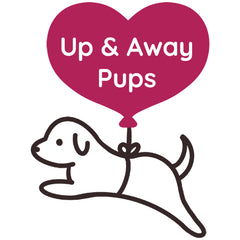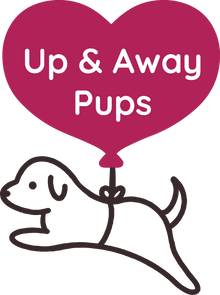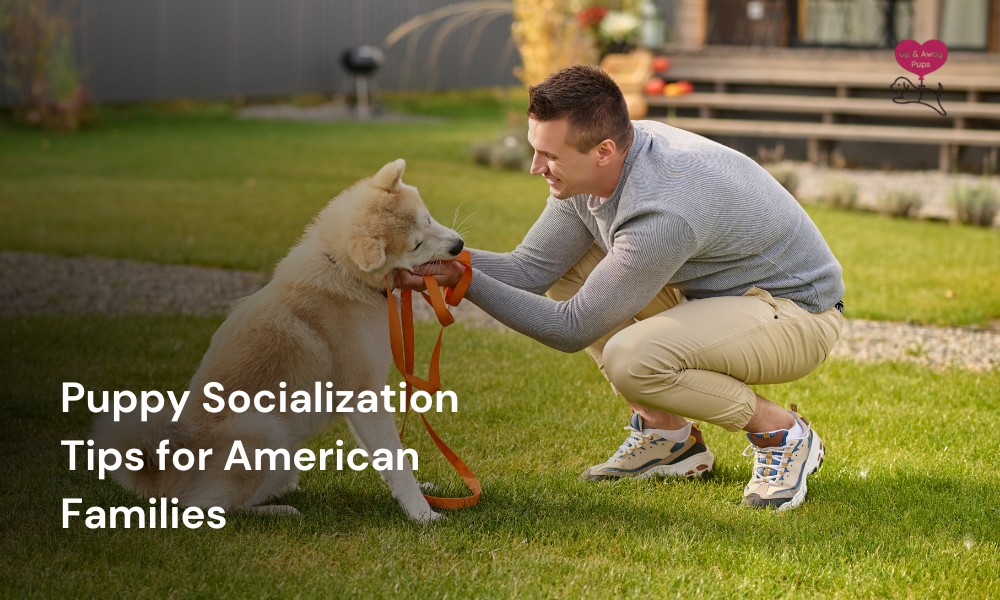Puppy Socialization Tips for American Families
Socializing your puppy is essential for building confidence, reducing fear, and preventing behavioural issues. Like babies, puppies need early exposure to people, sounds, places, and other animals—ideally between 3 to 14 weeks of age. Start small, use positive reinforcement, and focus on everyday experiences like meeting humans, riding in cars, and hearing household noises. Avoid overwhelming situations or risky areas before vaccinations are complete. With patience, gentle guidance, and consistency, socialization sets the foundation for a calm, friendly, and well-adjusted adult dog your family will cherish.
Here is a parallel between human babies and puppies:
• Both need to be fed
• Both need to be babied.
• Both need to learn boundaries.
• Both need to be socialized
Living alone, in isolation, is not an option. Your pup needs to learn, early on, to get comfortable with human beings and, preferably, even other animals. Most dog owners don’t realize this, but the first few weeks and months are the most important for shaping behavior, confidence, and long-term temperament.
What Exactly Is Puppy Socialization?
Socialization isn’t just about introducing your puppy to other dogs. It’s about helping them learn how to safely explore the world, understand how things work, and feel comfortable in everyday situations. And when done right, it sets the stage for a happy, well-adjusted adult dog.
To break it down further, socialization is the process of exposing your puppy to different people, animals, sounds, textures, places, and experiences in a positive way. The ideal age to do so is between 3 to 14 weeks, as that’s when pups are most naturally curious and less fearful of new things.
After that window, they may still learn and adapt, but it becomes more challenging. This makes early and consistent exposure incredibly important.
Why Socialization Matters So Much
It is obvious, really. A well-socialized puppy becomes an upstanding pupper of society, one that is:
• Confident in unfamiliar environments
• Less reactive to loud noises or sudden movements
• Comfortable around children, adults, and other animals
• Less prone to anxiety or aggression
• Easier to train and more responsive to commands
It is similar to how socializing works with us. If we take a kid who has been isolated their entire life, they’ll be frightened in new places. On the other hand, if we take someone who’s been socialized, they’re more likely to feel comfortable in a new place around new people.
Start Small and Build Confidence
This isn’t like swimming, where you just jump into the pool and hope for the best. Throwing your puppy into a crowd and hoping that’ll socialize them will only traumatize the pup. That approach isn’t one we recommend.
What we do recommend is taking things slowly.
Take them to a new environment and let their natural curiosity take over. They’ll walk all over the place, explore different surfaces, and approach people on their own. As for everyday stimuli such as vacuum cleaners, blenders, doorbells, car horns, etc., go about your day as you normally would, so they get used to it all.
Needless to say, this is a prolonged effort. There will always be an item or two your pup won’t be familiar with, and that’s completely fine. Our goal is to ensure they’re comfortable around everyday things.
Meeting People and Other Dogs
The introduction and socialization with other living beings is the most important aspect. Let’s start with humans.

Introducing Puppy to People
Humans are easier, as they can cooperate with you. Let people (seniors, adults, kids) know what you’re doing, and they’ll more than likely help you out. Some people will naturally be shy, some more forward, which is a good thing. Whenever your pup shows interest in other humans and behaves well, reinforce that behavior. A treat or some petting works.
Other Pets
This is where things can get a little complicated, but still manageable. If you know pets that are already socialized and desensitized, that’s perfect, as they’ll almost act like mentors to the pup… or at least not harm it.
We do not recommend taking your pup to dog parks off-leash from the beginning. Initially, opt to go to a calm place and only meet dogs who are known to be friendly.
Keep an active eye out for signs of stress like lip licking, yawning, or tail tucking.
Puppy playdates are great if both dogs are compatible in size and energy. The goal is to teach your pup appropriate doggy manners without overwhelming them.
The Vaccine Timeline vs. Socialization Needs
This part can feel confusing, but it should be understood properly. Puppies need time to build up their immunity through vaccines, which isn’t usually complete until 16 weeks. However, socialization begins before then. See the problem?
Well, the solution is a balanced approach wherein you start socializing after your puppy’s first set of vaccines (usually around 7–9 weeks), but avoid high-risk environments like public dog parks or pet store floors.
Controlled environments, such as your home, a friend’s house, or structured puppy classes run by trainers, are ideal during this phase.
Don’t Forget the Car, the Leash, and Being Alone
Some of the most common challenges for adult dogs are anxiety during car rides, leash pulling, or separation issues. These can often be avoided if addressed early.
• Take your puppy on short car rides to positive destinations (like a park or a friend’s house)
• Get them used to wearing a collar and leash indoors before attempting a walk.
• Practice short separations by leaving them alone for a few minutes at a time in another room.
These small efforts go a long way in preventing stress-related behavior later.
Professional Help Can Make a Difference
If you’re unsure how to socialize your puppy safely, consider a puppy class run by a certified dog trainer. Look for classes that focus on positive reinforcement and allow for supervised, safe puppy interactions.
Veterinary behaviorists and trainers certified by organizations like the CCPDT (Certification Council for Professional Dog Trainers) are a great place to start.
Conclusion
Socialization isn’t about forcing your puppy into every new situation you can find. It’s about creating thoughtful, gentle experiences that help them understand the world is safe and full of good things. A few minutes a day, a new experience each week, and lots of praise—that’s all it takes.
The payoff? A dog who can handle new people, sounds, places, and challenges without fear. And that’s a gift you give not just to your dog, but to your whole family.
FAQs
Can I Socialize My Puppy Before They’re Fully Vaccinated?
Yes, but be cautious. Stick to controlled environments like your home, friends' houses with vaccinated pets, or structured puppy classes that require proof of vaccination.
How Do I Know If My Puppy Is Overwhelmed?
Watch their body language. Signs of stress include panting, yawning, backing away, whining, or trying to hide. If you see these signs, stop and give your puppy a break.
Is It Too Late to Socialize My Puppy If They’re Older Than 14 Weeks?
It’s not too late, but it may take more time and patience. Older puppies may be more cautious, but with consistent, positive experiences, they can still become confident and well-adjusted.


